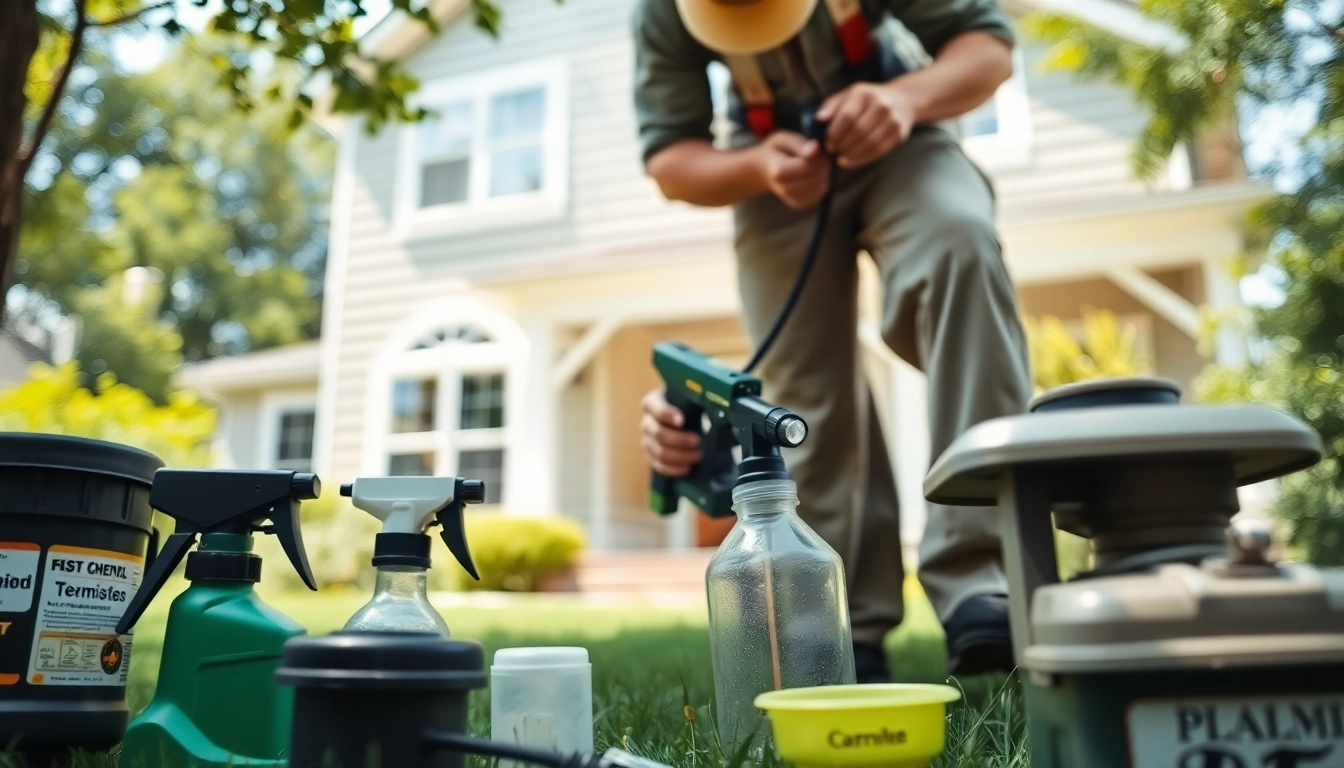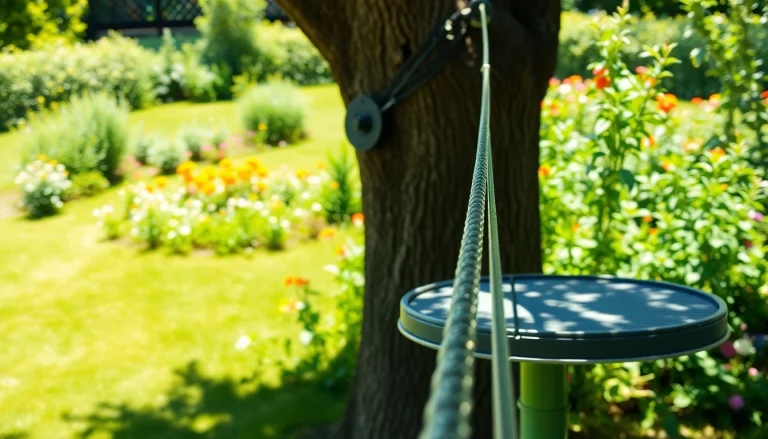
Understanding Termite Treatments
Termites are often underestimated, but they can cause significant damage to homes and buildings, costing homeowners thousands of dollars in repairs. Therefore, knowing about termite treatments is essential for safeguarding your property. This article explores the various aspects of termite treatments, including types, signs that indicate a need for treatment, and effective methods available.
What Are Termite Treatments?
Termite treatments comprise a range of strategies aimed at eliminating existing termite infestations and preventing future ones. These treatments often incorporate chemical, physical, and biological methods tailored to the specific type of termite and the extent of the infestation. The primary goal of termite treatments is not only to eradicate the pests but also to protect the structure against potential damage.
Common Types of Termite Treatments
Understanding the types of termite treatments available can empower homeowners to make informed decisions. Here are the most common treatments:
- Chemical Treatments: Involves the application of insecticides known as termiticides. They can be soil-applied, foam, or injected into the wood.
- Physical Barriers: These include installing barriers that make it difficult for termites to gain access to the structure. They can be made of metals or synthetic materials.
- Bait Systems: These use wood or cellulose-based bait stations filled with a slow-acting insecticide that termites consume and carry back to their colonies.
- Natural Remedies: Products that use plant-derived substances or biological controls to combat termites.
Signs You Need Termite Treatments
Identifying the signs of a termite infestation is crucial for timely intervention. Homeowners should be vigilant for the following signs:
- Visible termite damage in wood, such as hollow-sounding wood or cracked paint.
- Frass (termite droppings) that resembles sawdust scattered near wooden structures.
- Swarms of winged termites, particularly in the spring months.
- Dimensional changes in wood such as warping or bulging.
- Discarded wings around windows and doors.
Effective Methods for Termite Treatments
There are several effective methods available for treating termite infestations. Each has its benefits and ideal applications depending on the severity of the infestation.
Chemical Treatments and Their Applications
Chemical treatments remain one of the most common methods for combating termites. The various types of chemicals and their applications include:
- Soil Treatments: Soil-applied termiticides create a barrier that prevents subterranean termites from entering the structure. Treatment is typically done during construction or prior to landscaping.
- Wood Treatments: These involve injecting chemicals directly into wood, making it less attractive or toxic to termites.
- Insecticidal Baits: Installed around the property, these systems attract termites, allowing them to consume the bait and return it to their colony, leading to colony collapse.
Physical Barriers: Prevention and Installation
Installation of physical barriers is a proactive approach to combat termites. These barriers can be constructed from steel mesh, concrete, or other durable materials, effectively blocking termites from accessing the structure. The installation process generally occurs during the construction phase but can also be added later as a preventive measure. Regular maintenance and inspections help ensure they remain effective.
Natural Remedies for Termite Control
For those seeking environmentally friendly alternatives, natural remedies can be effective in repelling termites. Some well-known methods include:
- Orange Oil: This oil contains d-limonene, which can kill termites on contact.
- Neem Oil: Disrupts termite reproduction and feeding.
- Boric Acid: A common insecticide that is safe for humans and pets; when ingested by termites, it disrupts their digestive systems and leads to death.
DIY vs Professional Termite Treatments
When addressing a termite problem, homeowners often face the choice of DIY solutions versus hiring a professional pest control service. Each option has merits and drawbacks.
When to Opt for DIY Solutions
DIY solutions may be suitable for minor infestations or preventive measures. Homeowners comfortable with home repair and maintenance tasks may opt for product-based solutions like sprays and bait stations. It’s crucial to thoroughly research products and follow all application instructions for maximum efficacy.
Benefits of Professional Pest Control Services
Hiring professionals can be advantageous for several reasons, including:
- Expertise in identifying the type and extent of the infestation.
- Access to industrial-grade products and equipment.
- Comprehensive systems that include ongoing monitoring and maintenance.
- Guaranteed results and follow-up services.
Cost Comparison of DIY and Professional Treatments
Costs can vary widely between DIY and professional treatments. DIY products typically range from $10 to $500, depending on the size and severity of the infestation. In contrast, professional services may range from $900 to over $3,000 based on the nature of the treatment and the specifics of the property. While DIY solutions can be budget-friendly, the effectiveness of professional services often leads to a more reliable outcome.
Preventing Future Termite Infestations
Once termites have been eliminated, prevention becomes the next priority. Implementing preventive measures can significantly reduce the likelihood of future infestations.
Best Practices for Homeowners
Effective prevention starts with a comprehensive strategy. Homeowners should consider:
- Regularly inspecting the home for signs of termites and damage.
- Storing firewood away from the property and removing wood debris.
- Ensuring proper drainage around the home to minimize moisture accumulation.
- Using treated wood or naturally resistant species for decks and fences.
Regular Inspections and Maintenance
Conducting regular inspections is vital in earlier detection and maintenance of termite barriers and treatments. An annual inspection by a qualified pest control service can help identify potential issues, ensuring swift action can be taken to mitigate risks.
Landscaping Tips to Deter Termites
Landscaping plays a significant role in termite prevention. Homeowners should consider the following tips:
- Keep plants and shrubbery trimmed away from the foundation.
- Avoid using mulch that can harbor moisture or provide a source of food for termites.
- Plant termite-resistant species, such as certain types of cypress or cedar.
Evaluating the Success of Termite Treatments
After treatments have been applied, it is crucial to evaluate their effectiveness to confirm that problems have been resolved.
Signs of Effectiveness Post-Treatment
Homeowners should look for concrete signs that indicate successful treatment:
- A significant reduction in visible termite activity.
- Absence of frass or discarded wings.
- No evidence of damage or new infestations during inspections.
Follow-Up Care and Monitoring
Long-term success often depends on proper follow-up care. Homeowners are encouraged to maintain contact with their pest control provider to schedule periodic checks that can help prevent re-infestation.
Long-Term Cost Benefits of Effective Treatments
Investing in proper termite treatments and preventive measures can save homeowners substantial amounts in repairs and renovations. The long-term benefits outweigh initial costs, ensuring that homes remain intact and safe from destruction.





